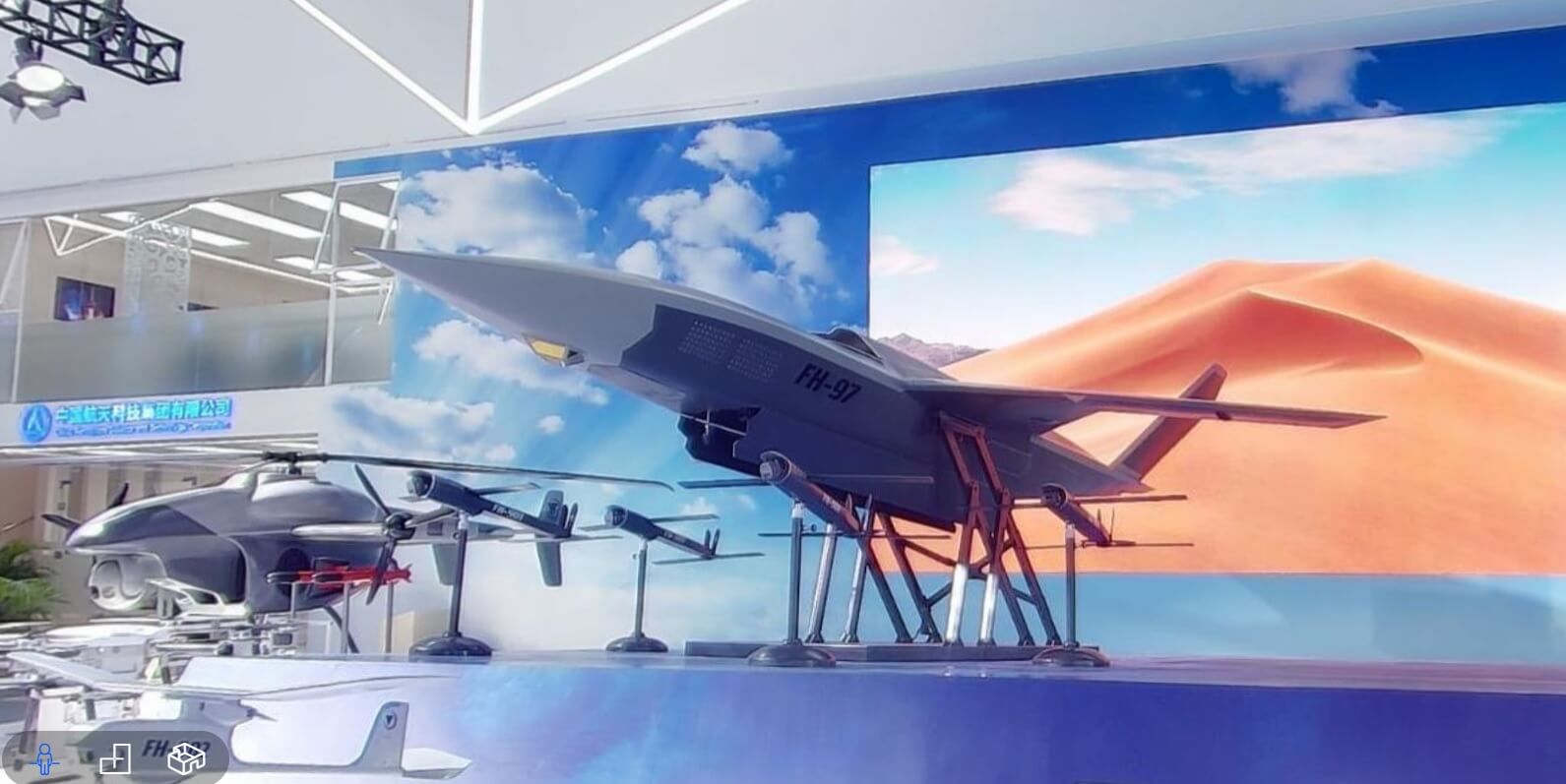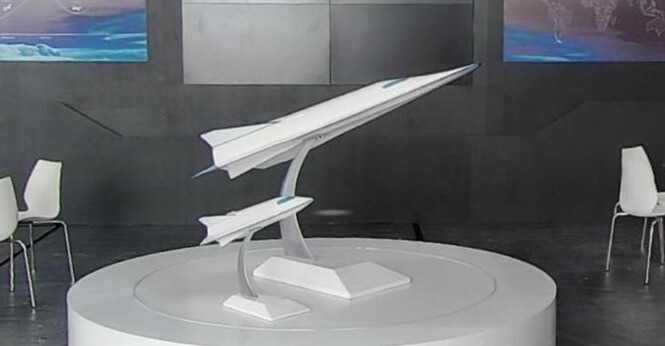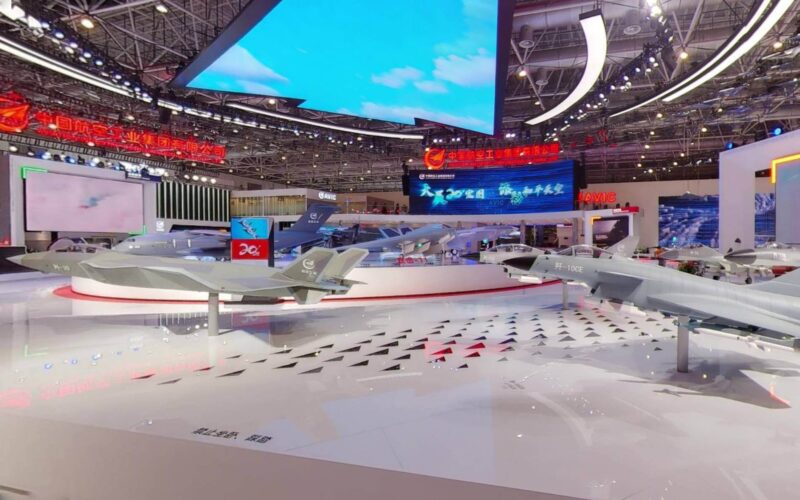Zhuhai Airshow, which is also known as Airshow China, is the largest exhibition of military and civil aviation in the People’s Republic of China. This year, it was ripe with new developments and concepts from the country’s aviation industry. Here are some of AeroTime’s picks for the weirdest, most interesting, or simply ‘out there’ ideas.
CASC FH-97: the Chinese Valkyrie
Between the Kratos XQ-58 Valkyrie, the Boeing ATS and the entire Skyborg project, cheap, stealthy and high-performance combat drones which could accompany manned fighter jets into battle seem like the hot new thing. Indeed, the concept of ‘loyal wingmen’ is on its way to revolutionize aerial warfare, which is why major air powers have been investing in it heavily.
For a long time, there was no concrete information about China’s take on this formula. Was the country’s defence industry developing something? At Airshow China 2021, we found out the truth – yes, the global superpower had been hard at work.
Unsurprisingly, the FH-97, displayed by the China Aerospace Science and Technology Corporation (CASC), bears more than a passing resemblance to the XQ-58, which flew for the first time in 2019 and performed weapons tests in April 2021. It is too early to judge the seriousness of the FH-97 project, and when we are going to see it fly. However, a host of combat drone projects – some small, some big and some quite unconventional – were presented at CASC’s stand. This shows that the company is certainly taking the field seriously and has invested a lot of money into research.

CASC FH-97 (Image: Zhuhai Air Show)
The FC-31 and its many faces
The Shenyang FC-31 Gyrfalcon had its first flight back in 2012. That was less than two years after the maiden flight of the J-20, and the West was quite surprised with China’s ability to design and test-fly a second stealth fighter in such a short time. The aircraft was rumored to become the next addition to the inventory of the People’s Liberation Army Air Force (PLAF). But then it disappeared.
Throughout the year, bits and pieces of information have appeared in Chinese media, but nothing concrete. There has been some speculation that the jet was being prepared for export and that it might become a carrier-capable jet for the Chinese navy. But, until Zhuhai 2021, both facts had remained unconfirmed.
Several mock-ups of the FC-31’s new and updated look were presented at the airshow, including one of the jet’s cockpit. Additionally, the jet’s chief designer revealed that a new Chinese carrier-based jet is set to be rolled out later this year. The name of the new jet was not revealed, but a model and a render were displayed – both rather reminiscent of the Gyrfalcon. So, it’s possible that the FC-31 will be heavily modified before taking on carrier duty, and may even receive a new name.
In the end, it is quite likely that the FC-31 will include both land-based and carrier-based versions, be adopted by the Chinese Air Force, and be offered for export. Quite an assortment of roles.
A model of a stealth fighter jet is seen in the official media of China Shenyang Aircraft Corporation (SAC). The Aviation Industry Corporation of China’s (AVIC) just announced that China’s new carrier-borne stealth fighter will be unveiled this year. #Zhuhai2021 pic.twitter.com/JoywnFfqZd
— 彩云香江 (@louischeung_hk) September 30, 2021
Chinese sixth-gen proposals
Between performances from the FC-31 and the re-engined J-20, China appeared to be placing quite a bit of emphasis on its fifth-generation capability.
But the rest of the world seems to be fixated on the generation above. Between the United States’ NGAD, Europe’s FCAS and Tempest, and Japan’s F-X, the world’s major aerospace manufacturers are investing a lot into the development of sixth-generation fighter jets.
Recently, Russia has dropped some hints about its plans for a sixth-gen development timeline. China followed.
At Zhuhai, several renders of aircraft appeared to mimic western designs of prospective jets. While none had any concrete numbers in regards to performance or timelines, it is clear that China is also working out what the next generation could look like as well.
One render, seen in a presentation at the Aviation Industry Corporation of China’s (AVIC) stand, appeared to be almost identical to Boeing’s proposal for the F/A-XX from the early 2010s. Another, shown separately, was a different design with 2D vectoring engine nozzles and stubby wings.
Yang Wei, chief engineer of the J-20, visits the new military aircraft. Guess what is it? #zhuhaiairshow2021
— 彩云香江 (@louischeung_hk) October 4, 2021
(Video via wb/航空EXIA) pic.twitter.com/JCYYQA1AKZ
According to Dambiev, here is the official appearance of a promising sixth generation Chinese fighter developed by the Aviation Industry Corporation of China (AVIC). @RupprechtDeino @luritie @F15qa_n @louischeung_hk pic.twitter.com/BhKIpxt2ox
— The MAK (@intel1osint100) September 30, 2021
A seventh-generation fighter jet?
As if the sixth generation was not enough, an even more futuristic project was presented by AVIC. The PLAN Next Generation Carrier Aircraft features a forward-swept foldable wing, foldable tail, canards and massive internal bays.
Some material referred to the jet as the J-25, while a partial mock-up of the aircraft (displayed on the outskirts of an exhibition hall in a dramatic industrial diorama) was labeled ‘Kalavinka’, referring to a mythical bird with a human head from Asian folklore.
In contrast to the sixth-generation projects, AVIC provided data this time. The jet is supposed to have a top speed of Mach 4, a cruise speed of Mach 3 and a combat radius of 2,000 kilometers (1,080 nautical miles). Additionally, it should be powered by engines with 180 kN of thrust with afterburner enabled.
However, there are some problems with this arrangement. Not only was the aircraft depicted as having diverterless supersonic inlets that, generally, do not work beyond Mach 2. The forward-swept wing is also understood to have a limiting performance on the maximum speed. This would require unfathomable advancements in materials for it to sustain Mach 4, which suggests that the images and mockups provided were barely anything more than a design proposal.
News from the Zhuhai Air Show. AVIC released a mysterious and unprecedented display of the new aircraft. Both the shape and the overall design are quite different from the currently known active fighters.
— The Dead District (@TheDeadDistrict) September 27, 2021
What it can be?#ZhuhaiAirShow #Zhuhai2021 #zhuhai pic.twitter.com/MeyOwBULmg
Spaceplanes galore
If next-generation fighter jets are China’s bold step towards science fiction, then its spaceplanes can be considered a full commitment to the genre.

Models at Space Transportation’s pavilion (Image: Zhuhai Air Show)
China Aerospace Science and Industry Corporation (CASIC), one of the major Chinese spacecraft manufacturers, presented its own vision of how a spaceplane of the future should look.
Essentially, its first stage is an assortment of engines mounted on an arrow-like fuselage, and the second is highly reminiscent of the Space Shuttle. Called Tengyun, the system was first announced back in 2018. But this year, it was followed by a lavish presentation that included a render, a short video and an announcement of a planned propulsion system. Supposedly, the first stage of the Tengyun will take a page out of the SR-71’s book and feature a combined turbojet-ramjet engine – a feat that has never been accomplished on a launcher vehicle before.

